HYPERBOLA- 5 (Normals)
Equation of Pair of Tangents
Let equation of hyperbola be
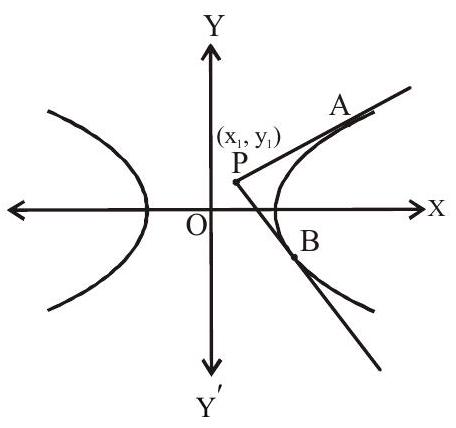
Example 1: A pair of tangents drawn from the point
(a).
(b).
(c).
(d).
Show Answer
Solution :
Equation of pair of tangents is
Answer: (c)
Equation of Normal to the Hyperbla :
i. Point Form
Slope to tangent
Slope to normal
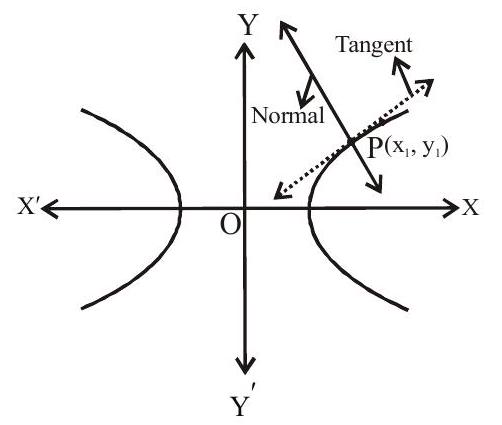
Equation of normal
ii. Parametric Form
or
iii. Slope Form:
Point of contanct is
Exercises
1. A normal to the hyperbola
(a).
(b).
(c).
(d).
Show Answer
Solution :
Equation of normal is
Normat meets the axes at
Now equation of PM is
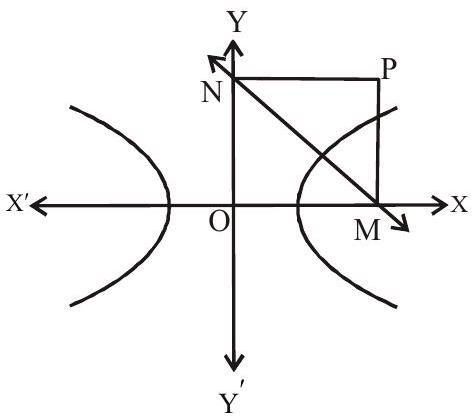
and equation of
Answer: (a)
2. The line
(a).
(b).
(c).
(d).
Show Answer
Solution :
Equation of normal is ax
This equation compare with
i.e.
Answer: (c)
3. The line
(a).
(b).
(c).
(d).
Show Answer
Solution :
The line
Given equation is
Answer: (b)
4. The normal at
(a).
(b).
(c).
(d). none of these
Show Answer
Solution :
The equation of the normal at
This intersect the transverse and conjugate axes at
Let
Thus locus of
Let
Answer: (b)
Some Important Results
1. Normal other than transverse axis never passes through the focus.
2. Locus of the feet of the perpendicular drawn from focus of the hyperbola
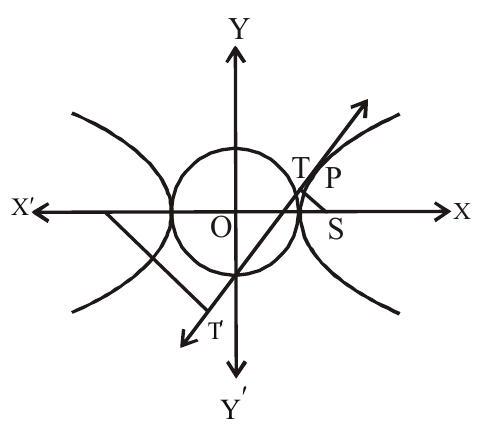
3. The product of the feet of these perpendiculars is
4. The portion of the tangent between the point of contact and the directrix subtends a right angle at the corresponding focus.
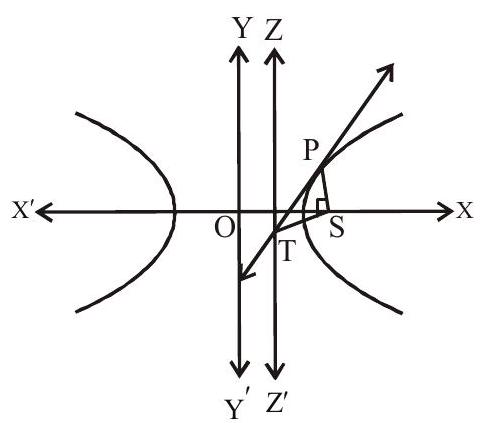
5. The tangent and normal at any point of a hyperbola bisect the angle between the focal radii. This spells the reflection property of the hyperbola as an incoming light ray aimed towards one focus is reflected from the outer surface of the hyperbola towards the other focus.
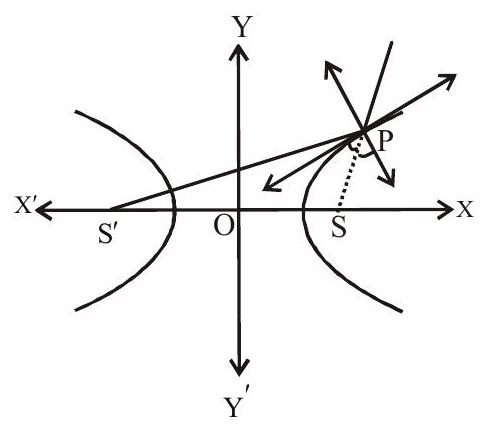
6. If an ellipse and a hyperbola have the same foci, they cut at right anlges at any of their common points.
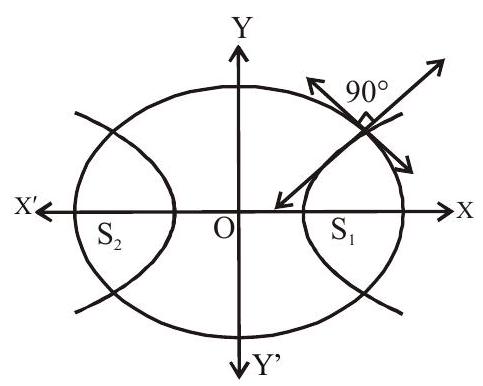
7. The ellipse
8. The foci of the hyperbola and the points
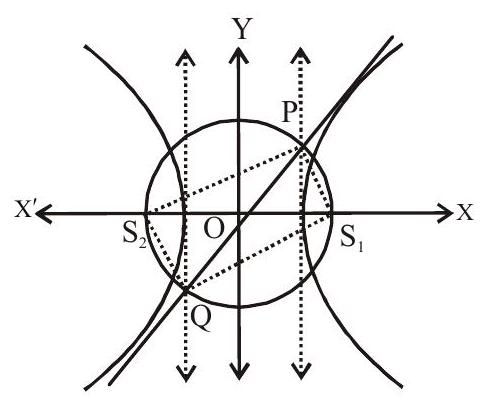
Practice questions
1. Normal is drawn at one of the extremities of the latus rectum of hyperbola
(a).
(b).
(c).
(d). none of these
Show Answer
Answer: (c)2. If the normal at
(a).
(b).
(c).
(d). none of these
Show Answer
Answer: (c)3. Normals are drawn to the hyperbola
(a).
(b).
(c).
(d). none of these
Show Answer
Answer: (a)4. Let
(a).
(b).
(c).
(d).
Show Answer
Answer: (d)5. If the normal at the point
(a).
(b).
(c).
(d). none of these










